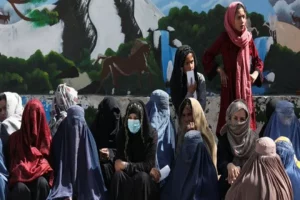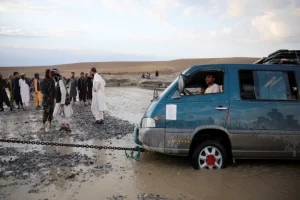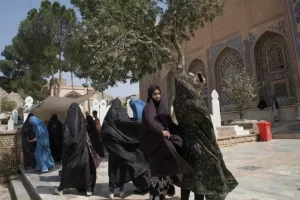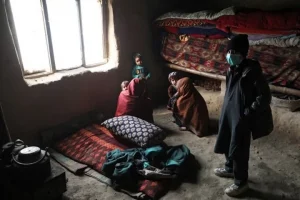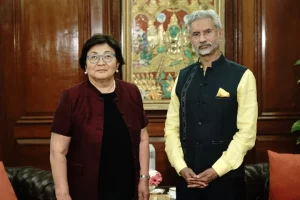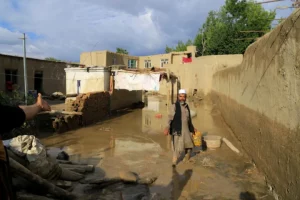The recently concluded 22nd summit of the SCO Council of Heads of States, though held in a virtual format, gushed too many winds in the geopolitical space.
The SCO summit concluded with a joint statement, titled the ‘New Delhi Declaration, which not only listed challenges emerging from the on-going Russo-Ukrainian conflict, but also covered issues that are pertinent to the region, including instability in Afghanistan under the Taliban rule.
Shanghai Cooperation Organization on Post-Taliban rule
In the context of post-Taliban Afghanistan, it is safe to argue that the SCO is a house divided. Ethnic loyalties among member states, diverging policy (on the issue of Taliban) and inadequate coordination within the members, indirectly contributed to the Taliban’s rise in Afghanistan, with some member states still looking to influence the new regime by strengthening its influence in the region. Disagreements within such geographically vital regional forum has given confidence to Taliban, which resulted in the group putting forth promises based on false pretext such as formulating an inclusive government, advocating women education, and banning affiliated terrorist groups (still active) with safe havens in the north, south and south eastern parts of Afghanistan.
The Islamic Emirate emphasizes that the Afghan government’s participation should be facilitated in the upcoming SCO summit to be held in Kazakhstan.
— Ministry of Foreign Affairs – Afghanistan (@MoFA_Afg) July 5, 2023
Nevertheless, regional stability is vital to all member states, as it not only affects regional growth but also compromises trade, transit, and economic cooperation along the South Asian-Central Asia-Eurasia trajectory.
The quest for ‘inclusivity’
It is therefore not surprising that the New Delhi Declaration of the SCO stresses the need for Taliban to form a comprehensive inclusive government, involving ethnicities from all religious, and political groups. Yet, this aspiration does not root itself in ground realities of Afghanistan.
Inclusivity redefined
In the search for an inclusive model, it is important to align with multilayered consciousness among Afghans based on the tribal, religious, ethnic, and national identities. It is important not to undermine the flicker of an Afghan national identity in the country, which may open the door of rising above other sub-identities, and foster national unity.
Deciphering the tribal system
The consensus among many scholars post-Taliban takeover, is the possibility of an ethnic war: Pashtuns holding key appointments and subsequent policies of persecution against the Tajiks, Hazaras, Uzbeks among others, including the removal/demotion of key loyalists of the said tribes, with Pashtun commanders and governors administrating provinces with demography dominated by other Afghans. Many scholars analyse the current regime from the perspective of a dominant Pashtunist Taliban subjugating other ethnic groups of the country, probing factors of incitation by non-Pashtuns against Pushtun dominance, taking revenge against their marginalisation.
However, the author does not support this view and tries to simplify Afghanistan’s tribal system for scholars alike, to prevent pre-evaluation of the current situation from the perspective of a possible and endless inter-tribal conflict.
To begin with, it is important to first differentiate the term tribe with ethnic groups. In Afghanistan, tribes are subsets of ethnic groups. The tribal system is pillared on the notion that members of different tribes share common ancestor with a particular decent. With marriages prominent between ethnic Uzbeks and Tajiks and Shia Hazaras marrying outside bloodline, each sub tribe has a unit which can be larger than others. At the structural level, tribes have sister or cousin tribes, with a history of conflict within the bloodlines, depending upon shared adversary or the level of threat or sharing of resources and territories.
https://twitter.com/Daa_Wood/status/1683392536663007233
Fundamentally, tribes and their subsets are culturally unique, follow patterns indifferent to each other (each tribe or subsets). That said, tribal allegiances are not hermetically sealed. It is not based on birthright but rests majorly on tribal leaders’ pragmatism. In a jirga, once permitted (in unison/consensus based on votes), the individual and his family is permitted to live with the tribe, subject to he and his family following the tribal code of living, which is key to tribal cohesion.
In terms of leadership/selecting a tribal head (irrespective of nomination from a jirga), the nature of tribal leadership does not necessarily depend on power alliances or politics. The ability to forgive a crime and showcase a character of solidarity is a core characteristic of a tribal leader.
For emerging analysts, this tribal system may appear unpredictable, volatile, and complex. But this tribal system ensures stability in the times of turmoil, even in the absence of rule of law or state’s inability to restore order. This is evident even in the current Taliban regime’s decision making, in towns it found the tribal system functioning smoothly, the Taliban did not interfere in the jirga’s decision making, elevated the most respected member of the jirga to provincial leadership. This was also witnessed during the first year of Taliban’s rule, in areas where the tribal system dominated (Waygal & Pech in Nuristan), local businesses flourished even after change of flags.
Tribalism is not just way of living for Pashtuns not just in South, East, and South East but in regions where the tribes are not local. Even within Pashtuns, most political and religious leadership have multi-tribal relationships. Within Pashtuns in particular, the tribal head strengthens its political ambitions by recruiting followers from his lineage/family, moving upwards to clan and then tribe, that differs in the context of southern Pashtuns, who are spread over large territories, divided by topography and natural barriers with limited means of travel. Hence, a Pashtun seeking political leadership will try to influence subsets and rally as many as possible under a common ideologue, recruiting through local networks based on occupation, religious schools, and inclined political affiliates.
That said, this is not just limited to Pashtuns, but many tribes are scattered over vast topography. One is the Ghilzai tribe, which are stretched throughout 34 provinces of Afghanistan; making them one of the unique tribes without a land. Yet, there are pockets of land that have historically being dominated either by Ghilzai or their subsets. Holding a tribal land holds greatest significance in the Afghan Tribal system. Belonging to a tribe with access to land, means holding a territory owned by that tribe. This can be translated to members of the tribe willing to wage war over his land, which to him not only secures his family future or his security but also his home, which he is willing to defend or die.
The Way Forward
Scholars, taking note of historical disagreements, tribal rivalries, differences between ethnic identities, coupled by their social norms, religious practices, and familial values, connect factors of disagreement and discontent to political instability. To fulfil the idea of achieving inclusivity albeit at a conceptual level, policy makers/scholars alike must understand the importance of tribal values beyond the context of treachery and defiance, but as a social structure, beyond the prism of salwar-kameez clad-Kalashnikov fighters. Without a doubt the essence of national unity continues to live in the hearts of roughly all tribal leaders the author spoke to, including Taliban commanders. Hence, inter-tribal conflict is not inevitable. With national unity in mind, pragmatic tribal leaders can develop a framework of national unity based on tribal autonomy and a collaborative tribal and inter-tribal code of conduct to foster national unity. In other words, disruption of a tribal way of life may not be necessary to evolve a model of inclusivity that is rooted in the DNA of Afghan political culture.
To summarise, the author believes the idea of inclusivity can be developed, by amplifying existing Afghan consciousness, which exists across ethnic and tribal groups. The author, during his interaction with key leadership from all ethnicities within Afghanistan and elsewhere in the world, found greater discontent against the Pashtuns but also found arguments countering the ethnic divide. Inclusivity can only be achieved by creating awareness of national unity, which exists among many Afghans across the board.
Finally, the Taliban cannot be viewed as a group of ethnic Pashtuns, and certainly not as a political entity with the ability to propose the idea of Afghan unity. Nevertheless, they do enjoy relationships with subsets and other tribes, imparting some sense of stability and keeping the nation together. Could they therefore become the core around which inclusivity has the best chance to evolve?
In the author’s interaction with local Hazaras, the strong sense of vengeance against the Pashtuns was palpable. But, in parallel an equally powerful perception of Afghan identity was visible. Similarly with other tribes, the vengeance against the Pashtuns was echoed in their determination to protect/defend ethnic values, culture, way of living, but without abandoning the notion of being Afghan.
In fostering inclusivity, regional states would be able to play a vital role. In fact, the future of Afghanistan depends majorly on how regional powers interpret the idea of inclusivity. Much would depend on whether they view Afghanistan as a mere amalgamation of ethnic groups, or, for instance, engage to foster inclusivity by raising the level of Afghan national consciousness.
(Anant Mishra specialises on Afghanistan, where he has served three combat deployments. He was adviser to key military and civilian leaders of the Ashraf Ghani government. Views expressed are personal and exclusive to India Narrative)







